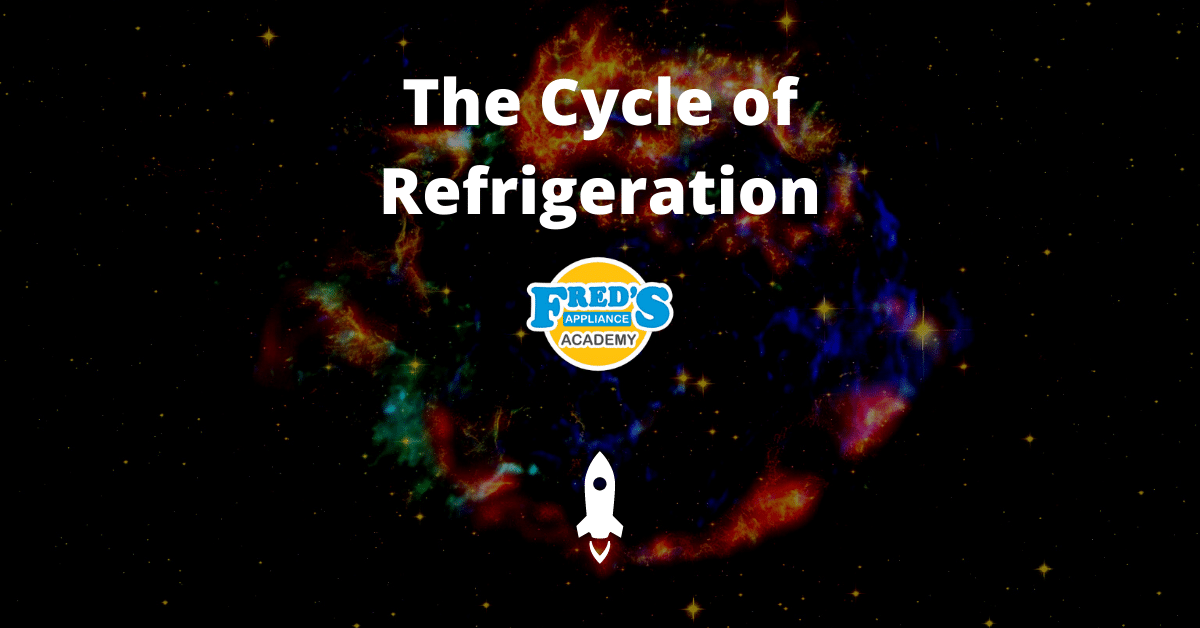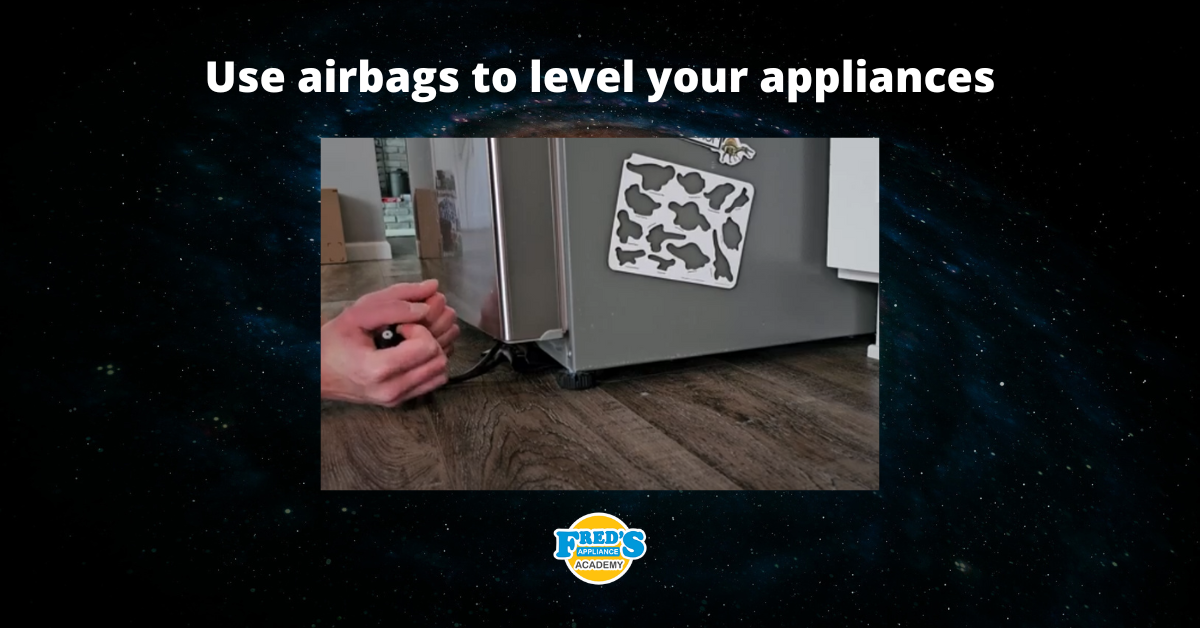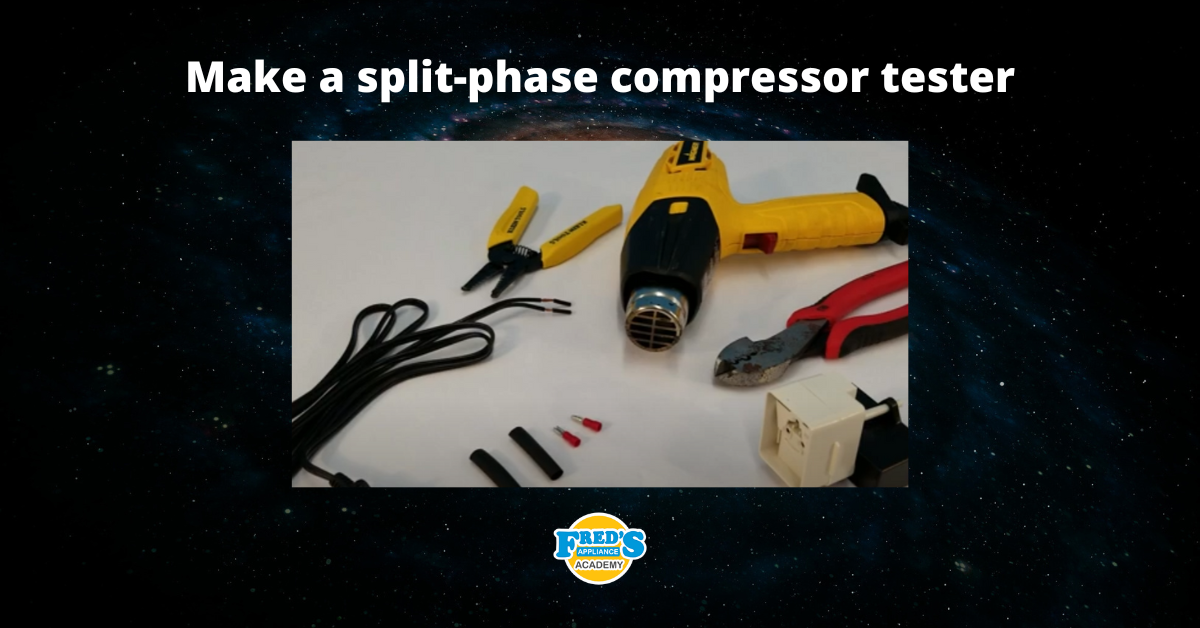
Most of us take for granted the tall shiny rectangular box sitting in our kitchen. However, a refrigerator/freezer combo is a home’s best friend and should never be taken for granted. As such, more time should be dedicated to taking care of it. After all, more time is spent in the kitchen, near the refrigerator, than in any other place in your home. One person may open and shut the refrigerator door 20-25 times per day.
If you would like to know more, let’s take a moment and review the process of refrigeration.
Refrigeration operates within the confines of a sealed system and begins when the refrigerant flows into the compressor. The compressor increases the pressure of the refrigerant and as it turns into a liquid, pumps into the condenser coils.
The condenser coils convert the gas into a liquid producing a certain amount of heat. The liquid is then pushed through a capillary tube that controls the amount of liquid moving through the evaporator coils.
The evaporator coils are cooled as the refrigerant expands into a gas . The vaporized refrigerant completes its journey by returning to the compressor where the cycle starts all over again.
That is a basic summation of how refrigeration works. Now let’s take a look at the process in a bit more detail.
Refrigeration
Food is cooled in the fridge and kept frozen in the freezer as heat is removed from inside each compartment. The liquid is changed to a gas and then back to a liquid and back to a gas before it completes its journey and becomes a liquid again, cycling through to repeat the process over and over. This is the crazy process by which your perishables are preserved. Most refrigerators have a compressor, two sets of coils, and two separate fans to remove heat and transfer cold air throughout the refrigerator compartments.
Condenser Coils
The process of replacing the heat with ice-cold air from your appliance begins with what is called a sealed system which was discussed in our opening paragraph.
The compressor begins to compress the refrigerant and sends it to the condenser coils.
The condenser coils further compresses the gas into a hot liquid making these coils hot to the touch. As the liquid passes through the coils the heat dissipates and the condenser fan removes the hot air.
The compressor, condenser coils, and condenser fan are usually found behind the lower rear panel on most models.
Evaporator Coils
The liquid refrigerant is returned to a gas form as it makes its journey through the evaporator coils. The evaporator fan helps the cooling process by removing heat and distributing cold air according to the temperature setting.
With the refrigerant in a gas form, the evaporator coils become cold. As the gas flows through the coils it is suctioned back into the compressor where the gas becomes a liquid and the journey begins once again, repeatedly throughout the lifetime of your appliance.
If the system is working correctly, you will notice a consistent level of frost present on the evaporator coils. If some rows have frost and some do not, this would indicate the sealed system has a leak or is blocked. We recommend you consult a licensed technician before attempting to do this work yourself.
Temperature Control
The more stuff you store in your refrigerator, the harder it strains to keep things cold. The quality of the make and model dictates how many times a day the temperature control board sends a message to the compressor to kick on when refrigeration levels dip below your desired setting.
Most freezer settings default for 0° F with the refrigerator set around 36° F.When either compartment begins to warm up, the control board sends voltage to the start relay, compressor, condenser fan motor, and the evaporator fan motor, which begins the refrigerants metamorphic journey.
Once the selected temperature is obtained, the control board shuts the voltage off and returns to a restful state until needed again. During this cycle, the temperature may vary…but this is hardly anything anyone pays attention to.
Air Flow
In a freezer-refrigerator combo, it is the evaporator fan in the freezer that sends cold air to the refrigerator cabin. The condenser fan helps cool the condenser coils.
Airflow is no doubt the most important factor in the operation of your appliance. If a fan quits working for any reason, if a vent is blocked, or if the air stops moving, airflow is compromised. And things are going to start going south. Quickly.
Air movement removes heat and is vital to cooling efficiency. If airflow is blocked anywhere in the system, the unit could experience a loss in its ability to preserve your food items. Freezers don’t add coolness nearly as much as they serve to remove heat from all refrigerator compartments.
Defrost System
With all these repeated refrigeration cycles referred to here, won’t there be some ice build-up somewhere? As important as air flow is to the lifeblood of your appliance, the defrost system is equally important. Why? When frost accumulates on the freezer walls and racks, air flow will become a problem. The compressor and condenser coils will need to work harder to maintain your temperature settings.
If there is frost on the freezer walls then there could be frost on the evaporator coils. This will be another reason for poor air flow.
Most defrost systems consist of a defrost heater, defrost thermostat, and a defrost control board.
Defrost Heater
If the heater fails, the evaporator coils will frost up. The heater is located behind the coils and is easily removed. It can be tested for continuity to ensure you’ve found the reason why the coils are all iced up.
Defrost Thermostat
The thermostat keeps track of the temperature of the evaporator coils. When that temperature drops to a preset level, the thermostat signals the heater to turn on, keeping the coils frost-free.
Defrost Control Board
The control board simply controls the frequency of the defrost cycle.
Thank you for taking the time to read about how refrigeration works. These same principles apply to any cooling system. The more you know about something, the better your control. Take care of your fridge and it will take care of you.

How to test a gas range ignitor

Congrats to our graduating March 2024 class

How to test a 120 volt receptacle

Congrats to our graduating February 2024 class

Why Is Your Dishwasher Soap Not Dissolving? (5 Easy Fixes)

Refrigerator Dripping Water Inside? 5 Quick Fixes

Appliance Industry 2023 Q4 Results

Congrats to our graduating January 2024 class

Clever ways to use airbags to level your appliances



